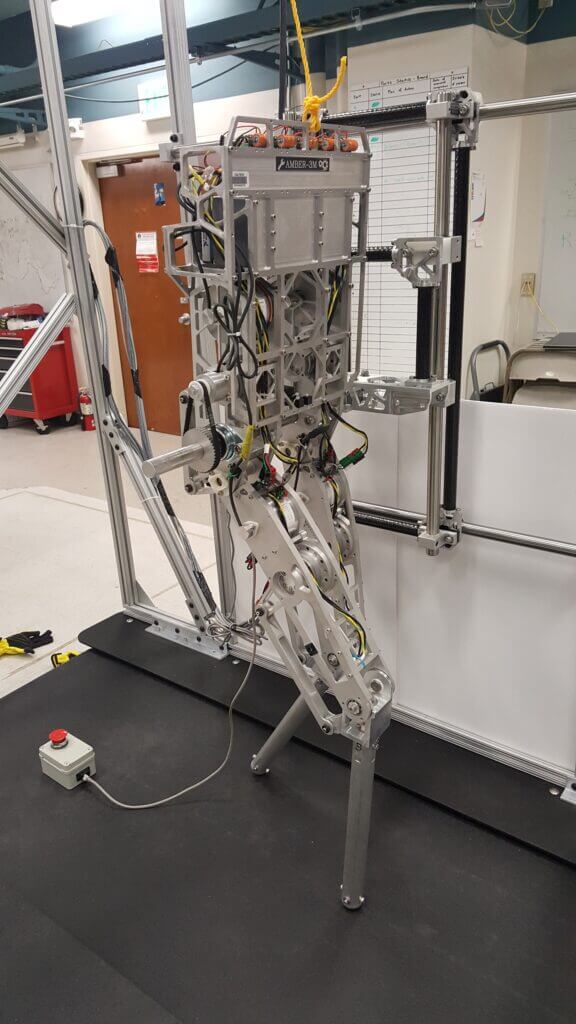Researchers have developed a control algorithm that helps robots walk on smooth surfaces

Robots move and react based on information coming to them from sensors. To perform actions optimally, they need intelligent ability and independent movement and avoid collision with objects around them. The fields on which robotics is based are diverse and include mechanical engineering, electronic engineering, computer science, programming and software engineering.
In the joints of each robot, motors are installed that control its movement and are responsible for the mechanical interaction with the environment. Therefore, for the purpose of its operations, and especially for the production of dynamic movements and fast and stable maneuvers, an understanding of the mechanics, dynamics and control of the movement is required.
Prof. Yizhar Or is a researcher in mechanical engineering and robotics at the Technion. His research focuses on the movement mechanisms of robots and improving their design and performance. For this purpose, he is based on mathematical models (differential equations that describe the behavior of dynamic systems, etc.), and also on observations of animal movement. According to him, "Using the equations, you can build the movement model of the robot and anticipate the effect of factors such as flexibility and friction and thus improve movement performance. After that, the model can be tested in experiments and improved accordingly. From the animals you can learn about movement mechanisms in a changing environment, under natural and difficult conditions, including how they crawl, run and swim."
Using the original control algorithm developed for gait stabilization, the robot fails and stumbles when the treadmill is slippery. The movement algorithm jointly developed by Prof. Or from the Technion, and Prof. Aaron Eames from the California Institute of Technology (Caltech), the robot manages to overcome the uncertainty of friction and surface slipperiness, and to walk dynamically and stably in a wide range of speeds.
The purpose of Prof. Or's latest research, which was awarded a research grant from the National Science Foundation, and which was done in collaboration with researchers from the California Institute of Technology (Caltech), was to improve the movement performance of robots with legs in changing terrain conditions, for example on smooth ground. Robots that are able to handle such ground, without slipping, can be used for a variety of movement applications in difficult terrain - for example, helping people walk in wet and snowy terrain, on ice and gravel, helping travelers walk on muddy and uneven ground and rescuing people from disaster areas. Therefore the research focuses on dynamic walking of robots, where their body is not in static equilibrium but falls forward with a raised leg until it touches the ground, and then swings the back leg, and God forbid.
The main technological and scientific challenge in this kind of research is to find methods for maintaining the stability of walking and its control. Animals are able to walk on slippery terrain, but most dynamic legged robots struggle to do so. This is because the existing control laws are based on a theoretical model that assumes that the feet make permanent contact with the ground without slipping and ignores frictional limitations. "The mathematics behind mobility in changing terrain conditions is not sufficiently understood. For example, for one moment the foot touches the ground and then detaches from it, then another foot. Therefore, the system of equations should be dynamic and hybrid and move between different contact states. As the number of degrees of freedom of the robot changes, so must the number of equations. Therefore, as researchers in the field, we need to build a different set of equations for each contact situation, and assemble from them a mathematical model that can be tested in experiments on all kinds of surfaces, even smooth ones", explains Prof. Or.
In order to find methods for maintaining the stability of robots' walking and controlling it in changing terrain conditions, the researchers built a system of differential equations that describe their dynamic movement and the effect of the forces in the motors in their joints. These equations also take into account variables related to sliding and friction situations, and the way the foot touches the ground - whether it slides, detaches or stands still. "We want robots to be able to deal with slippery and unpredictable ground as well. The current mathematical model does not take this into account," notes Prof. Or.
The researchers translated the equations into an algorithm, implemented it in the robots and let them move on lubricated and slippery treadmills in the laboratory, and saw that they were able to walk stably under a variety of different speeds and friction conditions. Before implementing the algorithm, they failed to do so and died. "This research is our humble contribution to improving the performance of legged robots in difficult and unpredictable field conditions, for the benefit of assistance and saving lives", Prof. Or concludes.
Life itself:
Prof. Yizhar Or, 48, married + three (17, 15, 11), lives in Mitzpe Hosheya in the Lower Galilee. likes to research, teach students and guide them in the field of mechanical engineering and robotics ("I'm interested in the connection between the mathematical side and the practical, real world").
